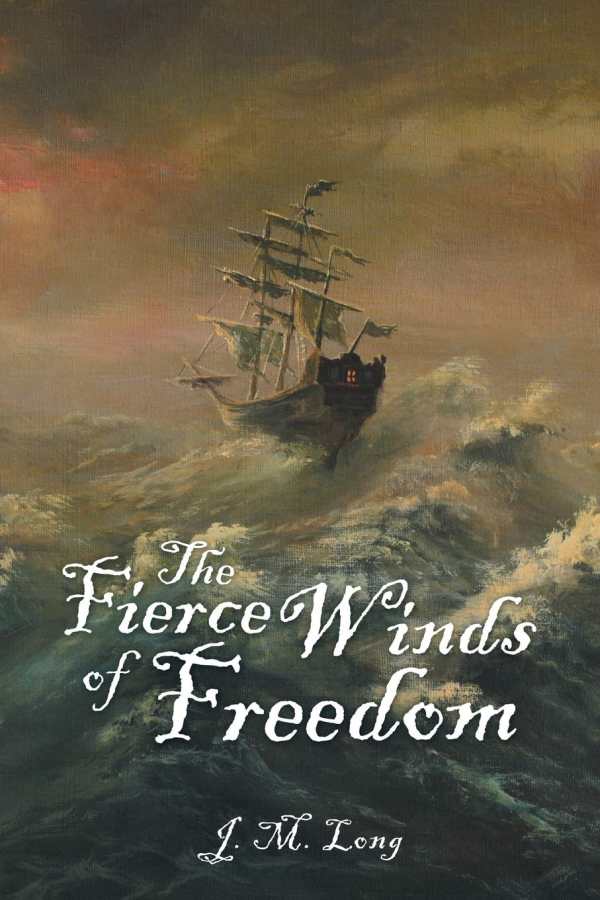The Fierce Winds of Freedom
The Fierce Winds of Freedom is a light but rewarding historical novel, brought to life by the wild optimism of its pioneering characters.
A ship populated by endearing characters with lively stories heads for America in J. M. Long’s short but sweet The Fierce Winds of Freedom.
John and Robert Holmes board The Royal Duchess in June of 1757 for a transatlantic journey to the British colonies of America. The Holmes brothers are escaping Ireland and its troubles; they hope to establish roots elsewhere. Joining them is an eclectic cast, including indentured servants and children. The difficult journey finds them all struggling against natural disasters, sudden deaths, and an encounter with a massive whale. The birth of a passenger’s baby sends ripples across the ship; the passengers, unmoored from their pasts, find time to reflect. Some work toward self-improvement. Along the way, the passengers connect, forming a floating community dedicated to surviving the passage and reaching their journey’s end.
Apart from one sudden death and a passenger who is washed overboard and later rescued, this trip is surprisingly short on conflict and tension. It eschews a singular plot, reading more like a collection of vignettes with the voyage as a connecting thread. John Holmes slips into his narrator’s role with upbeat optimism. He also oversees the children’s education, performs sermons on Sunday, and wanders about the boat describing all with attention to detail. Characters’ intimate goings-on are the focus.
A ship’s manifest lists the passengers, crew, and livestock, and over the course of the narrative, each name becomes a distinct character. Endearing moments include the student’s spelling bee. Even animals have personalities; a grey cat, Gus, comforts one of the children during a troubling time. The captain’s hard work to ensure a pleasant and successful journey rings true, and examples of his dedication are repeated.
The book alternates between covering details and capturing stories. John’s voice is lighthearted, and the book’s tone is upbeat throughout. Conversations capture the flavors of the era, with accents and turns-of-phrase contributing. Voices are rendered in a way that complements characters’ personalities. Some run-on paragraphs blend the prose with dialogue to the point of distraction; in such moments, the pace is impeded.
In the end, The Royal Duchess‘s journey becomes less about its destination and more about the community that forms on board. All of the elements come together, and the passengers’ ups and downs are impactful. The Fierce Winds of Freedom is a light but rewarding historical novel, brought to life by the wild optimism of its pioneering characters.
Reviewed by
John M. Murray
Disclosure: This article is not an endorsement, but a review. The publisher of this book provided free copies of the book and paid a small fee to have their book reviewed by a professional reviewer. Foreword Reviews and Clarion Reviews make no guarantee that the publisher will receive a positive review. Foreword Magazine, Inc. is disclosing this in accordance with the Federal Trade Commission’s 16 CFR, Part 255.

